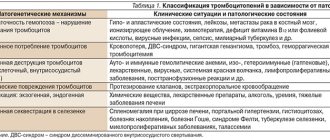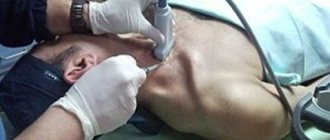Agnosia is a common neurological disease that manifests itself in disturbances of various perceptions in the patient, but consciousness and sensitivity are preserved.
With this deviation, it is difficult for the patient to adapt to the world around him. Pathology occurs due to damage to brain structures in certain areas.
There are three main types of agnosia and many subtypes, depending on which treatment will be adjusted. If timely treatment is not carried out, this disease can lead to certain serious disorders. It is worth considering that agnosia is preventable.
State Description
Agnosia is a disorder of various types of perception that occurs against the background of unimpaired consciousness and sensitivity. With this pathology, the patient ceases to recognize stimuli, recognize objects, and begins to react incorrectly to received signals from the outside.
Disturbances in behavior and condition may occur. When the first signs of deviation appear, you should immediately undergo examination and begin treatment. You should not engage in self-therapy for the disorder, as this can only worsen the patient’s condition and provoke complications.
Main provoking factors
Agnosia occurs due to damage to the cerebral cortex and nearby subcortical brain areas. This deviation may be due to the following reasons:
- various head injuries;
- diseases of cerebral vessels (stroke, atherosclerosis);
- multiple sclerosis;
- mental illnesses;
- damage to the spinal cord and brain in a child that occurs during pregnancy or childbirth;
- neoplasms in the brain;
- degeneration of brain areas that are responsible for analyzing and researching information.
Diagnostic methods
The Clinical Institute of the Brain has all the conditions for a full diagnosis of patients with agnosia. At the initial stage, it is important to determine exactly what difficulties the patient has with the perception of the environment. For this purpose, there are special tests, during which the patient is asked to describe objects, sounds, and point to parts of the body. After determining the type of disorder, it is important to conduct brain imaging using computed tomography or magnetic resonance imaging. This research method will detect neoplasms, heart attacks, vascular damage and other anomalies that can cause agnosia.
Classification of impaired perception
Depending on the location, the types of agnosia differ.
Agnosia comes in three main types, each of which in turn is divided into subspecies.
Visual agnosia
With this type of disorder, brain damage is localized in the occipital region. With visual agnosia, the patient cannot recognize an object or picture. The patient does not have visual impairment.
This type of agnosia manifests itself in different ways:
- Subject
. With damage to the surface of the brain, which is adjacent to the left side of the occipital bone: objects are unrecognizable (the patient describes it in general terms). - Color
. With lesions in the occipital region of the left hemisphere, which is considered dominant: the patient has difficulty distinguishing colors and shades, cannot match an object and a color. - Visual, manifested in optical weakness
(optical spatial). If the occipital and parietal region is affected on both sides: the patient cannot imagine the object and describe it. - Face perception disorder
. With lesions of the lower region of the back of the head of the right hemisphere: the patient cannot recognize faces, even his own reflection, but distinguishes between objects and pictures. - Simultaneous
. With lesions of the anterior part of the dominant occipital lobe: the patient cannot simultaneously perceive several objects. Autotopagnosia is characterized by the inability to recognize one's body. - Balint's syndrome
. It is noted with bilateral damage to the occipital-parietal region: the patient cannot look in the right direction, focus his gaze, and cannot read normally.
Auditory agnosia
With this type of disorder, damage occurs to the cortex in the temporal region of the right hemisphere.
A patient with auditory agnosia cannot recognize speech or sounds, but a disorder of the auditory analyzer is not diagnosed.
This type of pathology has such disorders that characterize each subtype of auditory agnosia, such as:
- Simple
. The patient does not recognize simple sounds. - Hearing-speech
. The patient is unable to distinguish speech. - Tonal
. The patient does not grasp tone, timbre, or emotionality, but at the same time perceives phrases and words normally.
Disorders of tactile and spatial sensations
Tactile agnosia is characterized by the fact that the patient cannot recognize an object by touch. It happens that the patient cannot even recognize a part of his own body and evaluate its location (somatoagnosia). With astereognosia, the patient cannot recognize an object using touch.
Spatial agnosia:
- damage to the left cerebral hemisphere
: impairment of spatial vision (opto-spatial), in this case there is often an intersection with visual agnosia; - lesion of the middle part of the parietal and occipital region
: the patient cannot localize an object in space.
There is also a spatial neurological disorder:
- which is expressed in the violation of one of the halves of the space;
- which is expressed in a violation of topographic orientation.
A rare type of disorder is considered when the patient does not perceive time frames and movements (akinetopsia).
3. Symptoms and diagnosis
By definition, agnosia is the inability to identify an object or any of its physical characteristics. There are, accordingly, a lot of varieties and variants of agnosia. The main classes are visual, auditory, optical-spatial (as a rule, the perception of spatial depth along the central visual axis is most affected), simultaneous and somatoagnosia.
With simultaneous agnosia, the patient is unable to perceive a group of objects as a single whole, although each of the elements is perceived and identified adequately. A classic example is the lack of comprehension and understanding of the overall plot of the drawing while correctly recognizing individual characters, backgrounds and other objects. Disorders of this type are usually associated with disturbances of gaze and visual attention, the volume of which does not allow keeping several objects in the active field at the same time.
Visual agnosia also includes numerous specific forms: prosognosia (failure to recognize faces), color agnosia, Balint syndrome, Lissauer object agnosia, etc. Similarly, there are several types of acoustic and auditory agnosia (failure to recognize tone, intonation, sounds of a certain timbre, addressed speech, etc.).
Somatoagnosia is a large group of disorders associated with loss of perception of one’s own body and/or its individual parts.
Anosognosia is usually considered as a separate form - “denial of diagnosis”, when the patient has a complete lack of awareness of the disease (this can be either a somatic or mental illness, loss of any function or amputation of an organ) and, accordingly, criticism of one’s own condition and capabilities .
In the diagnosis of agnosia, first of all, the anamnesis, complaints, chronology and dynamics of the disorders that have arisen are carefully studied. Depending on the most likely causes, additional studies are prescribed: experimental psychological, MRI or CT, EEG, laboratory tests.
About our clinic Chistye Prudy metro station Medintercom page!
What is typical for a person in such a state?
This neurological disease can only be diagnosed by a specialist based on the following symptoms:
- a broken landmark on the ground, the patient does not understand the map;
- the patient denies that he has abnormalities and defects, although there is a violation;
- the patient is not interested in the defect;
- the patient ceases to recognize objects by touch and sounds;
- the patient does not perceive his body;
- the ability to recognize faces, even close people, is impaired;
- the patient is unable to recognize complex images and also ignores much of what he sees in space.
Establishing diagnosis
This neurological disorder is not a common disease. Most often diagnosed before the age of 18.
Occurs as a result of many precipitating factors that affect each patient differently. In most cases, a comprehensive neurological examination is necessary to make a diagnosis.
The following research methods are used in diagnosis:
- magnetic resonance imaging;
- CT scan;
- neuropsychological and physical examinations.
Be sure to pay attention to symptoms and complaints, how long ago they appeared, and what could have provoked them. The specialist asks the patient to identify objects using different senses.
The neurological examination consists of the following:
- assessment of mental functions;
- assessment of visual functions;
- assessment of auditory functions.
A neuropsychological examination consists of the following: assessment of the patient’s condition using questionnaires and conversations. If necessary, the patient is referred for consultation to a psychiatrist.
4.Treatment
As follows from the above, it would be inappropriate to talk about the treatment of agnosia as such: in the vast majority of cases, the brain disease is treated and the causes that caused the recognition disorder are eliminated (to the extent possible). Thus, based on the results of a diagnostic examination, stimulants of cerebral circulation and tissue nutrition, a rehabilitation course with the participation of a psychologist and/or other specialized specialists may be prescribed. The prognosis also depends on the etiopathogenesis; extreme cases are spontaneous self-healing and persistent, treatment-resistant agnosia with corresponding social maladjustment.
Correction of the patient's condition
Treatment is prescribed by a specialist after a thorough examination and based on the results obtained. Self-therapy in this situation is not effective and is contraindicated; it can lead to irreversible consequences of brain destruction.
To eliminate the disease, it is necessary to eliminate the underlying pathology that provoked this deviation.
In most cases, treatment lasts no more than three months - sufficient time to recover. But there are exceptions when therapy is carried out for six months to a year. A positive result depends on the patient’s age group, severity and nature of the lesion.
After the provoking cause has been eliminated, it is necessary to make some adjustments that are aimed at eliminating the disease and the disturbed state of the body. Therefore, experts recommend:
- attend speech therapy classes;
- psychotherapeutic sessions;
- study with teachers;
- spend more time on occupational therapy.
In case of agnosia, it is recommended to constantly monitor blood pressure and, if necessary, take medications that improve blood flow and nutrition to the brain (nootropics and antiplatelet agents).
If a patient has been diagnosed with a brain tumor, then surgery to remove the tumor is mandatory.
Anticholinesterase drugs are prescribed to improve neuropsychological function. At the same time, classes are held with a neuropsychologist.
Treatment of agnosia
Treatment tactics are selected individually. The Clinical Brain Institute employs specialists with extensive experience in treating various types of agnosia. Only some cases require surgery - when tumors, aneurysms, abscesses and other structures are found that need to be removed. In other cases, treatment consists of compensating for lost functions and adapting the patient. For this purpose:
- classes with a speech therapist - special exercises strengthen neural connections and improve perception;
- occupational therapy;
- course of therapy with a neuropsychologist.
Doctors at the Clinical Institute of the Brain insist on full rehabilitation. It can last up to 10 months or more, but qualified medical care will significantly affect the patient’s well-being. Despite the fact that some changes in the structure of the cerebral cortex may be irreversible, it is possible to improve the patient’s quality of life and adapt it in everyday life.
Preventive actions
There are no special preventive methods, but experts recommend following these tips:
- correct and healthy lifestyle;
- giving up alcohol and smoking;
- compliance with rest and work schedules;
- proper and balanced nutrition;
- timely diagnosis and treatment of provoking diseases;
- blood pressure control.
Agnosia, although a rare disease, can lead to irreversible consequences, so it is worth paying attention to your well-being and deviations from the norm. It is impossible to make a diagnosis on your own, so you should not ignore professional help. With the right approach, you can get rid of deviations in the shortest possible time.







